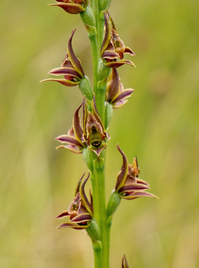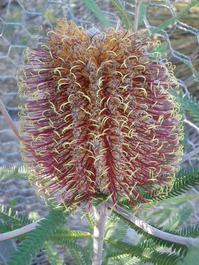Australian Journal of Botany
Volume 71
Number 2 2023
Seeds of two Australian species of Rutaceae were sown under laboratory conditions to investigate the effect of duration of exposure to warm moist temperatures (20, 25 and 30°C) on germination when moved to cooler temperatures (5–30°C). Both species had a greater germination proportion following 4–8 weeks exposure to 30°C but displayed variable responses under different germination temperatures.
Many leek orchids are threatened with extinction in Australia and are difficult to germinate in cultivation, hampering conservation efforts. Germination of leek orchids has recently been achieved using symbiotic fungi, but germination requirements without symbiotic fungi were unknown. We found that leek orchids germinate without symbiotic fungi only under low nutrient conditions, but most seedlings died when transplanted into the nursery. Although germination without symbiotic fungi is useful for testing seed viability, plants for translocation should be grown with symbiotic fungi.
Genetic diversity and the processes that maintain it are key considerations for translocation success. Here we compare genetic diversity, mating systems, pollination and reproductive output of a translocated population of Banksia brownii with wild populations. Genetic diversity and reproductive output were comparable or higher in the translocated population than in the reference populations indicating success, however the translocated population had the highest levels of selfing. As such we recommend incorporating both genetic monitoring and demographic assessment when evaluating translocation outcomes. Image: Rebecca Dillon. Photo credit: Rebecca Dillon.
Rust fungi are obligate biotrophic pathogens, and represent the most diverse and economically important group of plant parasitic fungi. The unexpected labelling of plant cell wall components in the cell walls of the fungi opens a new perspective on the host-plant–fungus interaction. Functional traits of cell wall components may contribute to the successful interaction of the rust fungi and the host leaf cells of Byrsonima variabilis.
 , Adam T. Cross
, Adam T. Cross  , Wolfgang Lewandrowski, Shane R. Turner, David J. Merritt and Kingsley Dixon
, Wolfgang Lewandrowski, Shane R. Turner, David J. Merritt and Kingsley Dixon








